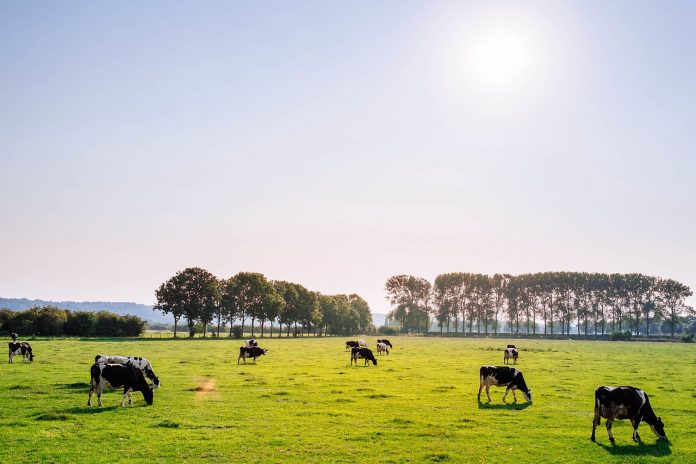Winter feed represents one of the largest costs associated with cattle production. Of the total annual feed cost for cattle, as much as 75% can be winter feed.
One way of increasing the profit potential in the cow herd is to reduce this cost by extending the grazing season while planning the winter feed program.
Consider a 1,500-pound mature cow; it will consume 38 pounds, approximately, of good quality hay per day. If that hay sells for $100 per ton, then her feed cost is $100 divided by 2,000 pounds times 38 pounds per day, which equals $1.90 cents per day.
Study. In a three-year study conducted by Ohio State University researchers Steven Loerch and Dave Barker at the Coshocton branch of OARDC, they looked at the cost of extending the grazing season, feeding hay and limit-feeding concentrates.
Their results indicated that the average winter feed cost per cow per day over the 112-day feeding period for the stockpiled pasture feeding system was $.63 cents per day per head, and the second cheapest program was $1.31 per head per day for corn limit-fed cattle on pasture. The prices used for the calculations were at $3.80/bu corn, $80/ton hay. Furthermore, their results did not indicate significant differences in cow performance between the systems.
Planning
Planning the winter grazing and supplementation program has a tremendous impact on farm profitability.
The OSU farm office has enterprise budgets that can be utilized to estimate your cost of production. These budgets can be found at farmoffice.osu.edu/farm-management/enterprise-budgets.
Extending the grazing season, maximizing forage utilization, reducing feed waste, understanding stored forage nutritional composition, creating a winter feed area and reducing the need for winter hay all influence profitability. The key to implementing these systems is to look at examples on farms. Once we have a vision of what we would like to see in our winter-feeding system invite others to provide input on the plan.
The local Ohio State Extension office, county soil and water conservation district and the Natural Resource Conservation Service have employees knowledgeable on grazing systems who can be helpful in providing input.
Finally, consider planning the entire system and sign up for the USDA/NRCS, EQIP grazing program.
The last part of the winter grazing system is implementing the plan. Advanced planning may help avoid some unnecessary changes and reduce your winter feed cost.













